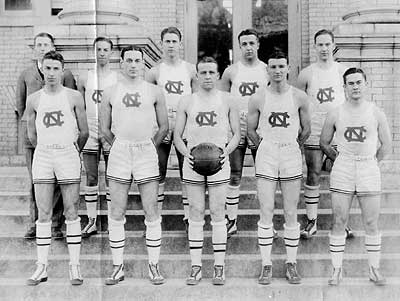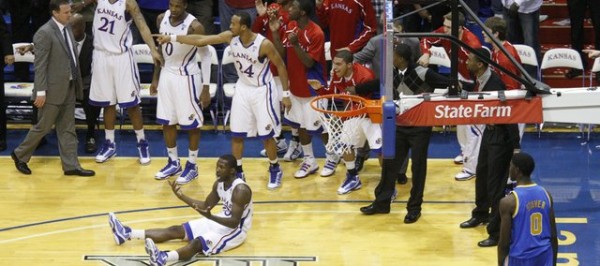Posted by rtmsf on May 22nd, 2007
One thing that a casual fan of college basketball may never hear about unless he makes a practice of sifting through the detritus of message boards is the curious case of Helms Foundation titles. Everyone knows about NCAA titles – UCLA has 11, Kentucky 7, Indiana 5, UNC 4, and so on down the list. But not everybody is aware of these Helms championships, and with good reason.

National Champions?
In 1936, Bill Schroeder and Paul Helms created the Helms Athletic Foundation (now defunct) in Los Angeles, a panel of experts in college basketball and football who were tasked with designating retroactive “champions” and all-america teams for each year since the inception of the sport (football in 1883; basketball in 1901). Keeping in mind that this group formed in the mid-1930s, they had very little in the way of substantive evidence on which to make their decisions, other than personal recollections and (perhaps) newspaper clippings of the games. This is a surely a long way removed from the modern analysis involving strength of schedules, efficiency ratings and RPIs – analytical tools that results in an invitation for a chance to win the national championship!
We won’t even get into the ridiculousness of the modern BCS rankings in college football, but suffice it to say that given the evidentiary limitations of the times, a Helms title that was given retroactively is at best a loosely educated guess of who may have been the best team during a particular year. Who can honestly say that the Helms Champion 1906 Dartmouth (16-2) squad was better than every other team that season (irrespective, it’s always Drinking Time at Dartmouth)? It’s difficult enough to make such an assessment in today’s environment, even with bountiful video and statistical data on every team available in seconds – imagine doing it without ever seeing a team or their opponents play a single game! Which is, of course, essentially what the Helms Foundation did when making its selections.

Is Keggy the Keg aware of Dartmouth’s National Championship?
So why is this relevant to today’s game, and by proxy, this blog? Ten years ago it wouldn’t have been. But nowadays, this has become a fairly contentious issue amongst some of the game’s bluebloods. Most notably, UNC has inarguably been touting its retroactive 1924 Helms title as a championship on equal footing with its four NCAA titles in its media guides and other media outlets (ESPN, CBS, etc.). It also has a banner celebrating this championship hanging next to its NCAA championship banners in the Dean Dome (see the 1:00 minute mark). And Heel fans can also purchase replica banners, including one honoring the 1924 champions, at a store on Franklin St. in Chapel Hill. In a sport that has always crowned its champions at every level in a tournament format, this does not sit well with members of other traditional powers, especially at Kentucky and Kansas, where the message boards enjoy periodic states of delirium over this issue.
Read the rest of this entry »
| rtc analysis
| Tagged: banners, bcs, dartmouth, dean dome, helms foundation, helms titles, kansas, kentucky, nc state, ncaa titles, roy williams, steve kirschner, unc
Share this story













































